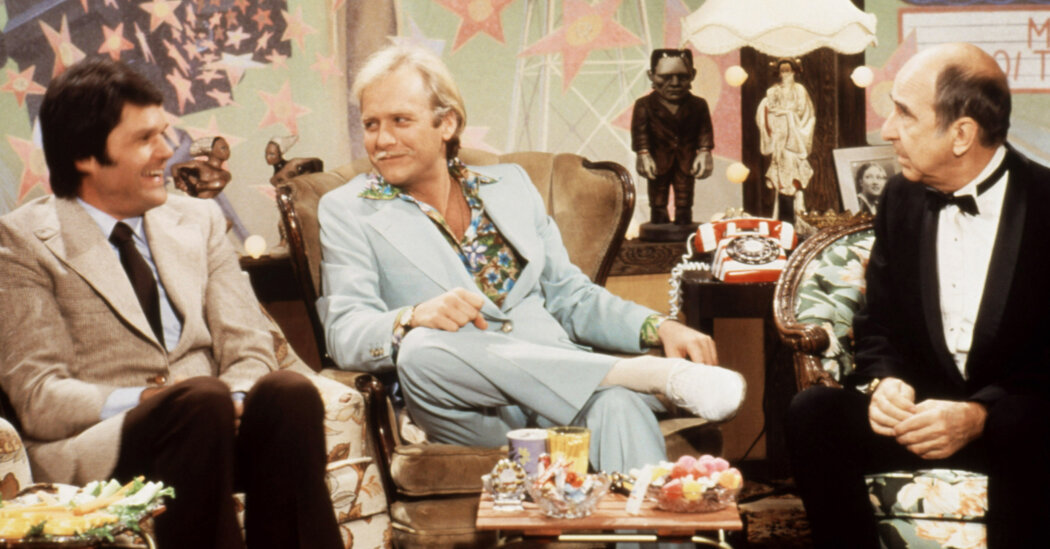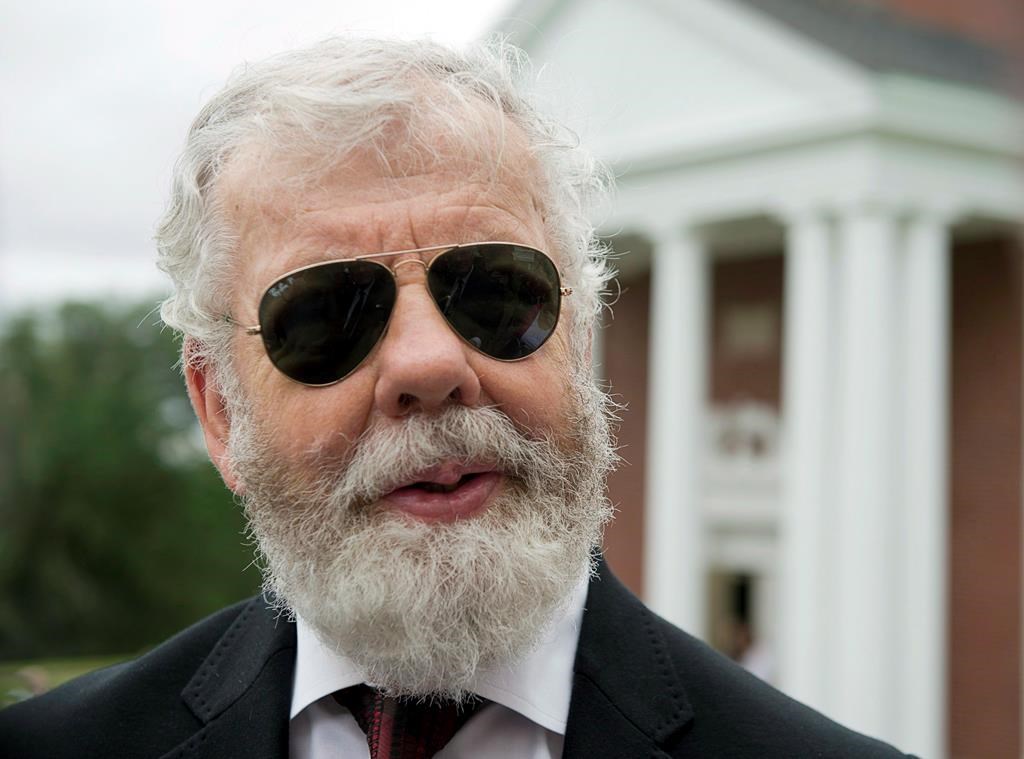Martin Mull, the deadpan comic actor, singer-songwriter and artist who won widespread attention in the 1970s on television shows like “Mary Hartman, Mary Hartman” and “Fernwood 2-Night” and remained active in television and film over the next half-century, died on Thursday at his home in Los Angeles. He was 80.
His wife, Wendy Mull, confirmed the death. No cause was given.
Mr. Mull, a graduate of the Rhode Island School of Design, broke into show business as a singer and songwriter with a satirical bent. He embodied the hip, cerebral humor that ran through the anti-establishment comedy of the 1970s and ’80s.
His persona — both the way he presented himself when he performed music and, later, the kind of roles he usually played in movies and on television — was droll, understated and often sardonic. Much like Steve Martin, with whom he was sometimes compared, he presented an outwardly buttoned-down image that belied an often absurdist sense of humor.
Mr. Mull’s first acting role was on “Mary Hartman, Mary Hartman,” Norman Lear’s satire of soap operas, which debuted in 1976. He was cast in the supporting role of Garth Gimble, a domestic abuser who meets his demise by being impaled on an aluminum Christmas tree.
The next year he starred in the show’s spinoff, “Fernwood 2-Night,” a parody of talk shows. He played the show’s host, Barth Gimble, Garth’s twin brother.
“With an undistinguished blond mustache, which may or may not be intended as a joke, Barth copes manic‐depressively with a shaky job situation and some hazy allegations about charges pending against him in Florida,” John J. O’Connor of The New York Times wrote in a review of the show. Barth interviewed guests about U.F.O. sightings and anchored segments like “Talk to a Jew.”
Mr. Mull also stood out for supporting roles in the movies “Mr. Mom” (1983) and “Clue” (1985), based on the board game, in which he played the tweedy Colonel Mustard, and on TV shows including “Roseanne,” the political sitcom “Veep” and the cult comedy “Arrested Development,” in which he was an incompetent private investigator named Gene Parmesan.
On “Roseanne,” Mr. Mull was the title character’s boss when she worked as a diner waitress (and later, briefly, her business partner after she bought the diner). Early in his seven seasons on the show, it was revealed that his character, Leon Carp, was gay; his life partner, introduced later, was played by Fred Willard, a frequent collaborator of Mr. Mull’s, who had played his talk-show sidekick on “Fernwood 2-Night.”
Mr. Mull’s performance on “Veep” as the political operative Bob Bradley earned him his only Emmy nomination, in 2016.
His many other TV roles included a high school principal on “Sabrina the Teenage Witch” and a high school teacher on “The Ellen Show.”
Mr. Mull co-wrote and starred in “The History of White People in America,” a parody documentary series broadcast on Cinemax in 1985. On the show, a sendup of social issue journalism in the style of “60 Minutes,” Mr. Mull employed the talents of many of his longtime friends and collaborators, including Mr. Martin, Mr. Willard and the writer-comedian Harry Shearer.
More recently, Mr. Mull was seen on the 2018-19 Fox sitcom “The Cool Kids,” about a group of rule-breaking friends living in a retirement community. His last role was on the Apple TV comedy-mystery series “The Afterparty.”
Mr. Mull’s daughter, Maggie Mull, sharing the news of his death on Instagram, wrote: “He was known for excelling at every creative discipline imaginable and also for doing Red Roof Inn commercials. He would find that joke funny. He was never not funny.”
Martin Eugene Mull was born on Aug. 18, 1943, in Chicago to Harold Mull, a carpenter, and Betty Mull, an actress and director. He was raised in Ohio and in New Canaan, Conn., and earned bachelor’s and master’s degrees in fine art from R.I.S.D.
He was part of a conceptual art group that mounted a show called “Flush With the Walls (or I’ll Be Art in a Minute)” in the men’s room of the Boston Museum of Fine Arts.
His interest soon turned to writing comic songs, but when he performed them, the audience was frequently baffled. “So I realized I’d have to introduce the tunes, and my tongue sort of went into my cheek, because that’s who I am,” he told New Times magazine in 1978. “And out of that, certain things got great laughs and cumulatively built into an act.”
Capricorn Records signed him, and he became known as a musical comedian. He opened for Frank Zappa and Randy Newman. He had a modest hit with “Dueling Tubas,” a parody of the theme from the movie “Deliverance,” which reached No. 92 on Billboard’s Hot 100 chart. Among the albums he recorded were “Days of Wine and Neuroses” and “Sex and Violins.”
He and Mr. Martin were friends and sometimes worked together.
“With Steve it’s so obvious that he’s putting it on, but with Martin it’s a lot closer to home,” Mr. Shearer told New Times. “You can never quite be sure whether he’s doing a character or whether that’s the guy, which is interesting.”
Through much of his career, Mr. Mull continued to paint, influenced by collage and dreamlike imagery. His work appeared in gallery shows and at the Whitney and Metropolitan museums. The Times art critic Roberta Smith, in a 1994 review, described his style as “a gentle, rather pleasing variant on New Image painting, which was prominent in the mid-1970s, when he was coming of age as an artist.” She called him “modestly talented,” though not original.
Mr. Mull was divorced from Kristin Johnson and Sandra Baker. In 1982 he married Wendy Hass, a musician. She and their daughter survive him.
In a 2018 interview with The Times, Mr. Mull was asked if he often heard other performers tell him that he had inspired them.
“Well, this is going to sound awfully egomaniacal, but yeah, I do,” he said. “But I think I know why. Because if you stay in the business and you reach a certain age, which I have by simply still breathing, you are now a legend — because you made it through.”
Alain Delaquérière contributed research.





